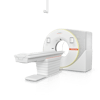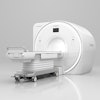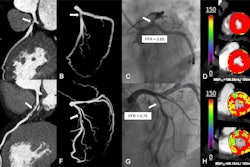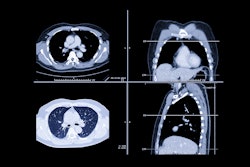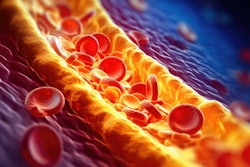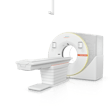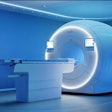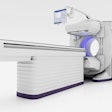CHICAGO - Deep learning improves coronary CT angiography's (CCTA) ability to quantify myocardial function, according to research presented December 1 at the RSNA meeting.
This capability has become feasible with the development of CT detector technology, presenter Sophie Wong, MD, of the University of California, San Diego told session attendees.
"Wide detector [CT] scanners have enabled the acquisition of the full cardiac cycle [and the measurement of] regional strain on routine CCTA without the need for other modalities," she said.
CCTA is a common and effective tool for evaluating coronary artery disease, Wong noted. But visual assessment of cardiac abnormalities can be tricky. In light of this, Wong's team explored the use of a deep-learning algorithm to measure myocardial strain on CCTA.
The study included 167 CCTA exams performed between January 2017 and January 2024 in patients who also had invasive coronary catheterization within 30 days; these exams imaged 668 coronary arteries. Of the 668 arteries, 27 showed occlusion, 156 severe stenosis, 80 moderate stenosis, and 405 mild or no stenosis. Wong and colleagues generated single midventricular short-axis slices from each exam and processed them using a deep-learning strain algorithm they developed themselves. Four cardiothoracic radiologists rated wall motion in each of six cardiac segments, first without results from the algorithm and second using quantitative maps produced by the algorithm. The investigators then assessed the deep-learning algorithm's performance using Spearman's rho (ρ), Cohen's kappa (κ), and intraclass correlation.
The group found the following:
- Peak radial strain showed moderate correlation with independent expert reader assessment of regional wall motion (ρ= -0.4, with 1 as reference).
- Intraclass correlation for segments graded by all readers was 0.57 (with 1 as reference).
- When provided with algorithm results, readers with more subspecialty experience were more likely to change their exam interpretation, Wong said.
- Readers upgraded wall motion scores on 46 out of 1,002 (4.6%) segments and downgraded scores on 32 out of 1,002 (3.2%) segments.
Algorithms such as the one used for this research show promise for assessing the functional significance of coronary lesions, Wong concluded.
"Future work may benefit from volumetric reader studies, transfer learning using coronary CTA data, and application to pharmacologic stress imaging," she said.
In a related talk delivered during the same session, presenter Jacob Martin Agris, MD, PhD, chief marketing officer and founder of radiology AI developer iSensure, reported that AI can identify four features of high-risk plaques -- positive remodeling, low attenuation plaque, spotty calcification, and the napkin ring sign -- on CCTA images with high accuracy and repeatability.
He and his colleagues developed a deep-learning algorithm, using a training dataset of 10,208 plaques from 1,919 patients, then evaluated the algorithm's performance with data from 2,442 plaques from 482 patients. They found the following:
| Performance of a deep-learning algorithm for identifying features of high-risk plaque | ||||
|---|---|---|---|---|
| Measure | Positive remodeling | Low attenuation plaque | Spotty calcification | Napkin ring sign |
| Area under the receiver operating curve | 0.89 | 0.85 | 0.87 | 0.92 |
| Sensitivity | 81% | 83% | 70% | 71% |
| Specificity | 81% | 72% | 87% | 94% |
"Our model aids readers in consistently identifying these high-risk plaque features which are highly correlated with a coronary or major adverse coronary event within one year," Agris said.
For full 2024 RSNA coverage, visit our RADCast.
